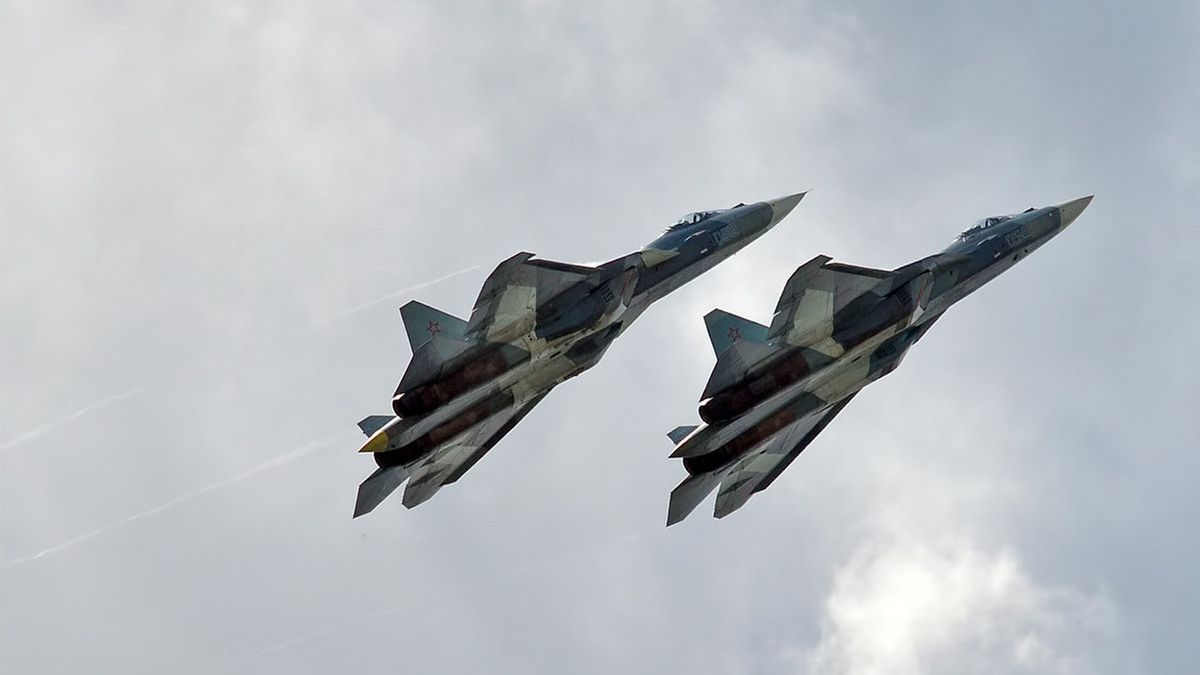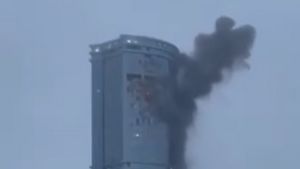JAKARTA - The unique flat fighter jet nozzle or 'muzzle' on the new S-70 Okhotnik heavy attack drone, most likely installed on the next modification of the fifth generation fighter jet Sukhoi Su-57, to increase its stealth capabilities, said senior pilot of the Russian Air Force Major General Vladimir.
The Russian Ministry of Defense uploaded a video clip earlier on Tuesday showing the launch of an updated version of the S-70 'Okhotnik' stealth heavy attack drone, which is equipped with a unique flat nozzle thruster to cut down on enemy radar tracking capabilities.
“Similar steps will most likely be taken for the Su-57, but this is possible, the second stage of its development. A new engine will be installed on it," the military pilot said, commenting on the plane's launch to TASS as quoted December 19.
Popov explained that the modified engine would most likely feature a flat nozzle, he said. But according to him, considering the fighter uses the afterburner acceleration mode, this nozzle should have the option to change its configuration.
"Installed in a fighter, it has to expand and narrow its throughput capacity," Popov explained, adding that the flat nozzle technology is undoubtedly a breakthrough in modern aircraft manufacturing.
The new nozzle for the Okhotnik heavy attack drone will greatly reduce its vulnerability to enemy heat-seeking missile warheads, Popov said.
"The flat nozzle is designed to cut off infrared radiation from the engine exhaust stream. The stream infrared radiation enables air defense capabilities with thermal radiation warheads to target drones," he said.

"The type of airflow entering compresses and obscures the gas coming out of the nozzle. There is no large nozzle and thus the gas stream coming out of the engine is invisible. This is a torch that essentially 'attracts' a thermal tracking missile, be it a weapon. air-to-air or ground-to-air," he explained.
The new nozzle has changed the shape of the drone's fuselage, which has cut off its radar signature, the military pilot said.
"The aircraft's radar signature is also reduced after the flat nozzle is installed. The cross-section that reflects the radio beam is also narrowed because the aircraft now has no rough features in its design and is almost flat," he explained.
"The fuselage of the drone now really looks like one wing. If we recall the first version of the Okhotnik, the engine was clearly prominent there and now it is not. Now all the features are smooth and as a result the cross section has been cut and the radar beam deflection has been enlarged," said the pilot. military experience.
To note, the Sukhoi Su-57 is a Russian-made fifth-generation multi-role fighter designed to destroy all types of air, land and sea targets. The Su-57 fighter jet is capable of developing supersonic cruising speeds, has an armament housed in the fuselage and a radar-absorbing coating and the most advanced onboard radio-electronic equipment.
The Russian Air Force will receive 22 Su-57 fighters by the end of 2024 and their number will increase to 76 by 2028. The first Su-57 fighters will be delivered to the Russian troops in 2020.
The English, Chinese, Japanese, Arabic, and French versions are automatically generated by the AI. So there may still be inaccuracies in translating, please always see Indonesian as our main language. (system supported by DigitalSiber.id)













